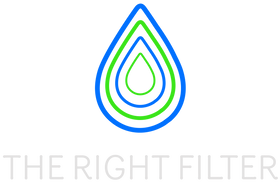Let’s talk about water, where it came from, where it’s going, and how we’re trying to save it. Because while H₂O might seem simple, its story is anything but.
Let’s rewind all the way back to 100 million years after the Big Bang. A new study in Nature Astronomy suggests water formed back then, in the aftermath of ancient supernovae. When these massive stars exploded, they spewed out oxygen that mixed with hydrogen in space, creating water in dense pockets where new stars and planets eventually formed. Some of that primordial water might even have survived to become part of Earth’s oceans.
Fast-forward to today, and water’s got bigger problems than just being old. Rising seas and road salt are turning freshwater supplies into briny messes. The U.S. dumps 25 million tons of salt on roads yearly, and climate change is making it harder to dilute the runoff. Droughts mean less water to flush out the salt, while rising oceans push saltwater into rivers like the Delaware, which supplies 60% of Philadelphia’s drinking water.
But science isn’t just watching the crisis, it’s fighting back. Researchers have created nanomats, thin strips of titanium dioxide and copper that use sunlight to break down pollutants in water. These floating mats are so efficient they could clean entire rivers, and they’re reusable to boot. Best of all? They leave no toxic leftovers.
And speaking of toxic leftovers, in the world of nuclear fusion, a team stumbled on a way to isolate lithium-6, a key fuel for fusion, without mercury. Their method, originally designed to clean oilfield wastewater, enriches lithium-6 by 5.7% per cycle. Repeat it 45 times, and you’ve got fuel pure enough for fusion reactors.
Now as for the microplastics clogging our waters, scientists have engineered microcleaners, tiny, biodegradable particles that hunt down plastics. Made from shellfish waste, these pellets disperse in water, grab microplastics, and then bubble to the surface for easy skimming.
Even industrial pollution is getting a smarter fix. A Korean team developed a system that cuts the cost of recycling volatile organic compounds (VOCs) by 50%. They did this by finding a way to regenerate the activated carbon that is currently being used, instead of replacing it. Funny thing, activated carbon is used in water filters for the exact same purpose.
So, what’s the takeaway? Water’s story spans billions of years, but its future depends on what we do now. From starlight-powered purifiers to plastic-eating microbots, science is writing the next chapter, one where clean water isn’t just history, but a guarantee.
Next time you sip a glass of water, remember: it’s been through supernovae, salt invasions, and high-tech cleanups. And thanks to science, it’s not done yet.
Articles Referenced
https://phys.org/news/2025-03-older-thought-key-constituent-galaxies.html
https://arstechnica.com/science/2025/03/salty-threats-for-drinking-water-rising-seas-and-land-based-pollution/
https://phys.org/news/2025-03-3d-nanotech-blankets-path.html
https://techxplore.com/news/2025-03-nuclear-fusion-fuel-toxic-alternative.html
https://phys.org/news/2025-03-microcleaners-disperse-capture-microplastics.html
https://techxplore.com/news/2025-03-technology-halves-recycling-carbon-substances.html
